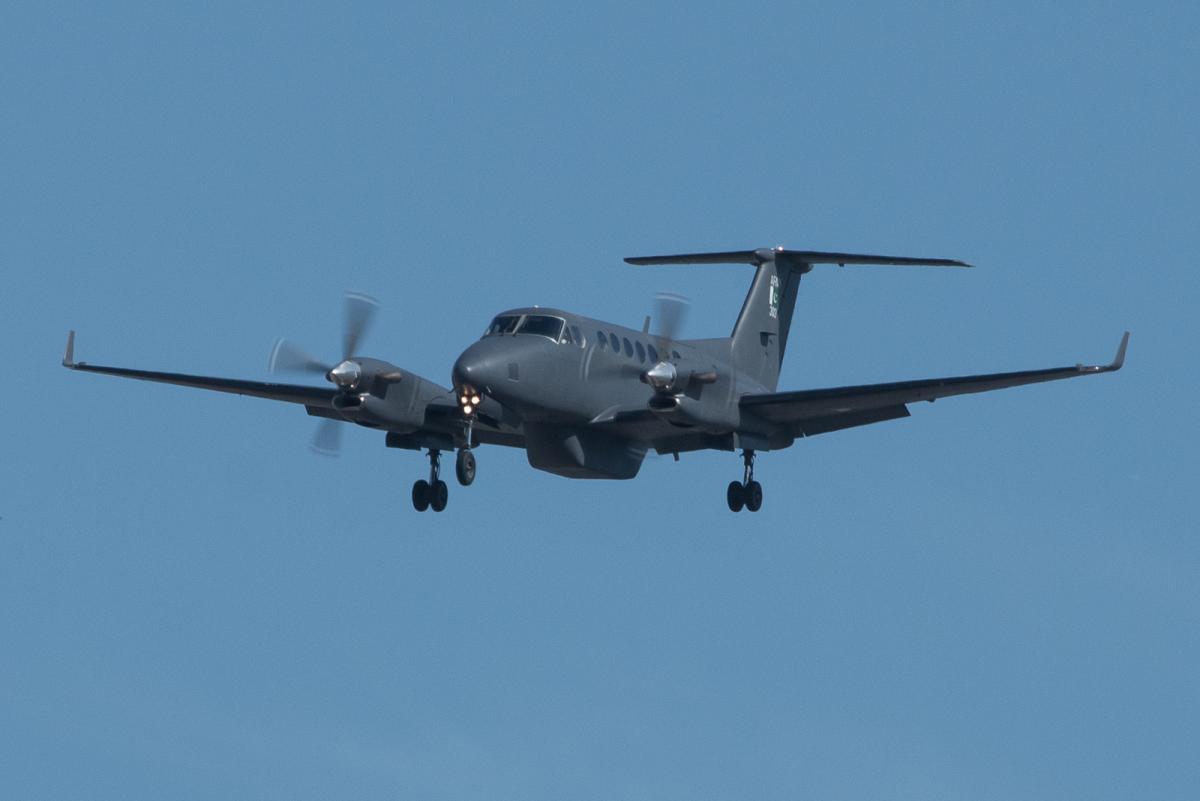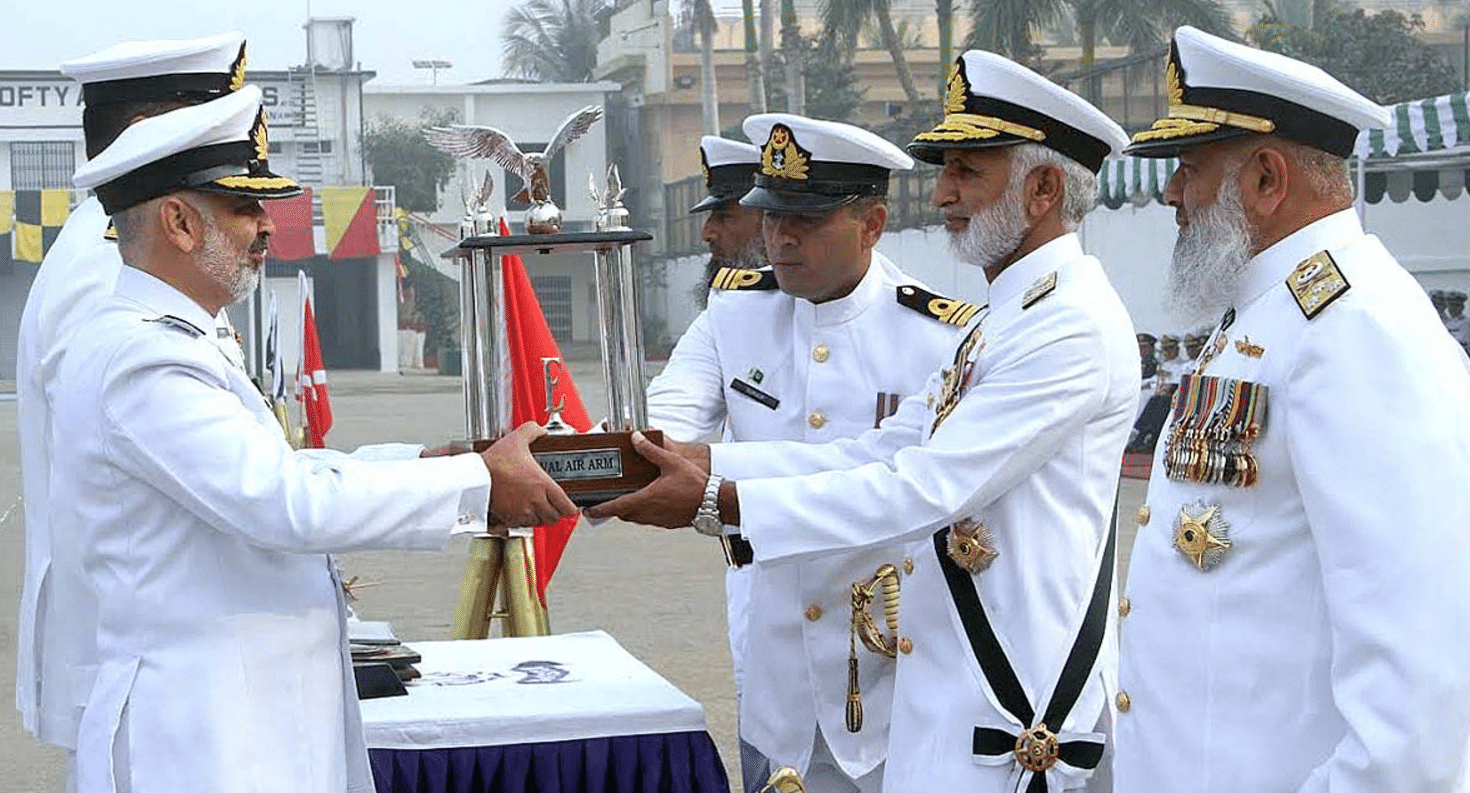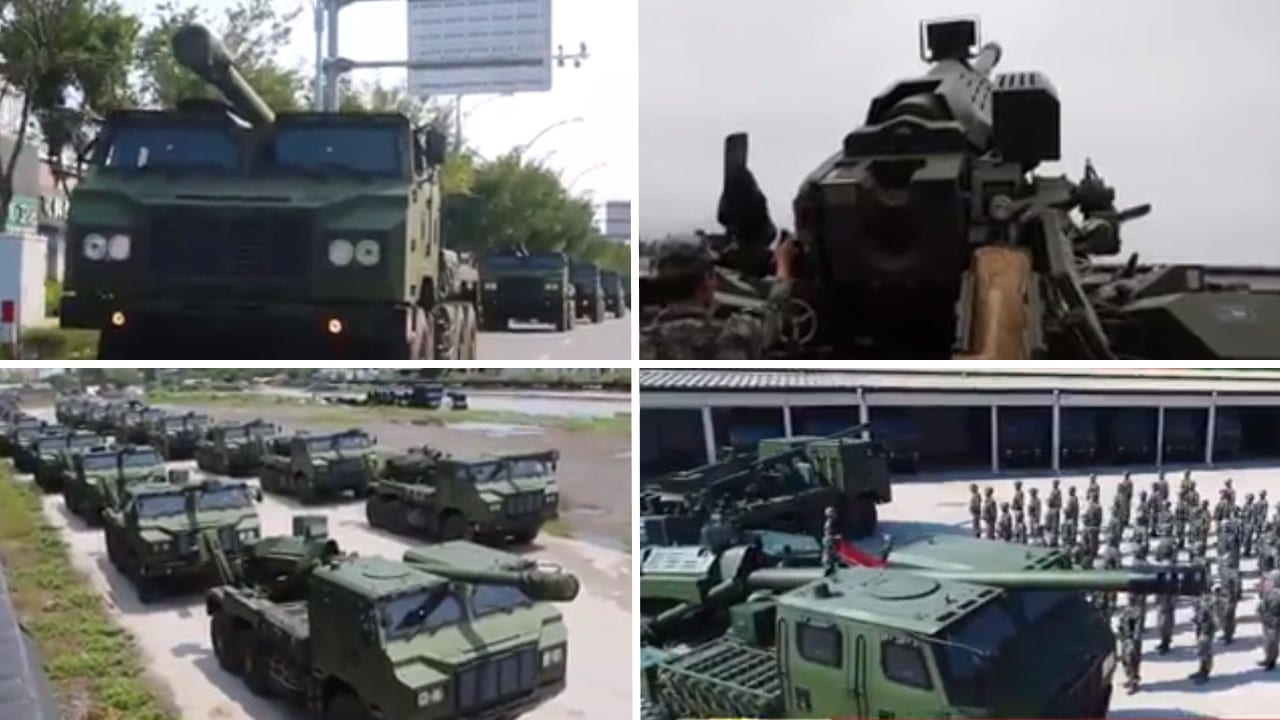3009Views 1Comment

King Air 350ER: Pakistan’s little known surveillance aircraft
Since 2010, Pakistan inducted a number of high-value surveillance assets. Many will be familiar with the Pakistan Air Force (PAF)’s Erieye and Karakoram Eagle airborne early warning and control (AEW&C) aircraft, which are vital air surveillance and battle management assets for the PAF’s air warfare operations, but there are many other intelligence, surveillance and reconnaissance (ISR) systems in use as well.
These include unmanned aerial vehicles (UAV) – such as the Finmeccanica (now known as Leonardo) Falco – and fixed-wing utility aircraft equipped with specialized ISR equipment. In terms of the latter, the Army operates two Hawker Beechcraft King Air 350ER ISR aircraft.
Ordered in 2010 and delivered around 2012 (if not earlier), the King Air 350ER ISR aircraft is certainly not the flashiest system around, but it is a very important asset for the Pakistani military. In modern network-centric warfare (discussed in detail here), a military’s ISR assets (reviewed here) are the means by which it can observe and understand the battlefield. These assets are basically the “eyes and ears” of the system, and as a result, are crucially important in a wide range of scenarios and situations.
For example, the Army could use the King Air ISR aircraft to identify moving targets within an area; that information would be passed – via data-link (more details here) – to other assets, especially combat elements such as ground troops and close air support (CAS) aircraft.
As noted above, Pakistan uses many different systems for ISR – UAVs, AEW&C, and fighter aircraft to name a few (additional details). Based on Beechcraft’s information, it is possible that Pakistan’s King Air ISR units are being used for ISR as well as target acquisition (ISTAR). Note, this is not confirmed, but based on the design of the Pakistan Army’s aircraft (note the large ‘belly’ under the fuselage), it would appear that this is the case; SAR was also listed as an option by Beechcraft.
Such ‘bellies’ usually indicate the presence of a ground-facing synthetic aperture radar (SAR) capable of ground-moving target identification (GMTI). To put it simply, SAR is essentially a radar system that is used to capture a very detailed ‘image’ of the ground. It is not photography, rather, the imaging is done through the use of radio waves. In turn, the SAR image offers users a very good understanding of the terrain. GMTI identifies moving targets on that terrain.
In an operation, the Pakistan Army would use the King Air ISR aircraft to monitor a combat area to identify moving threats and to understand the terrain. The SAR’s battlefield picture would be fed to a ground-station via data-link, which in turn would interpret the picture, and then convey pertinent information (e.g. a possible ambush by some hill) to friendly ground and air forces by radio. These forces would use their enhanced situational awareness to effectively engage surrounding threats.
This is basically a pseudo-JSTARS [Joint Surveillance Target Radar System) arrangement. Unlike a JSTARS aircraft, where the SAR system and command and control (C2) consoles are on the same aircraft, Pakistan has basically separated the two aspects. The SAR system is in the air (via the King Air 350ER ISR aircraft), but the C2 aspect is on the ground. If the aircraft is also equipped with electro-optical and infrared (EO/IR) equipment, then those ground stations would also be able to see live video and thermal imagery as well.
At present, Pakistan is using the King Air 350ER ISR to support its counterinsurgency (COIN) operations in the Federally Administered Tribal Areas (FATA). Given the low anti-air warfare (AAW) threat environment, these aircraft can freely fly above hot zones. However, with the Pakistan Army potentially becoming tuned to use a SAR-equipped platform for CAS missions, it may be a good idea for it to consider a system capable of stand-off range surveillance coverage.
While suitable for the low AAW environment of COIN, Pakistan will not be able to benefit from the system in a conflict against powers with strong AAW capabilities. However, this issue does not detract from the benefits of being able to possess solid situational awareness of an enemy’s armour or infantry formations. A much stronger ground-facing SAR integrated onto an airliner (e.g. ATR-72) or transport aircraft (e.g. CN-235) could offer Pakistan with a good JSTARS-like solution.
This JSTARS-like platform could be used to keep tabs on cross-border movements on the ground, and in turn, provide early warning and situational awareness support to friendly armour, infantry, artillery, and CAS aircraft (e.g. attack helicopters and multi-role fighters). There are challenges to this idea. First, one would secure a high-powered SAR system, there do not seem to be any readily available on the market. Yes, there are a number of systems capable of reaching up to 20km (such as the Leonardo/Finmeccanica PicoSAR), but stand-off range (e.g. 100km) would be appropriate for state versus state conflicts.
Besides integration costs and complexities (notwithstanding the introduction of a complete off-the-shelf system), actually finding a capable enough radar is a disqualifying roadblock. Granted, Pakistan could pair an existing SAR system to an ATR-72 or CN-235 with C2 consoles, but would such a system offer enough of a boost over current arrangements to justify the added cost? Probably not.



1 Comment
by Abdullah Arslan
ggood read….i really like that you give reference of related threads in between